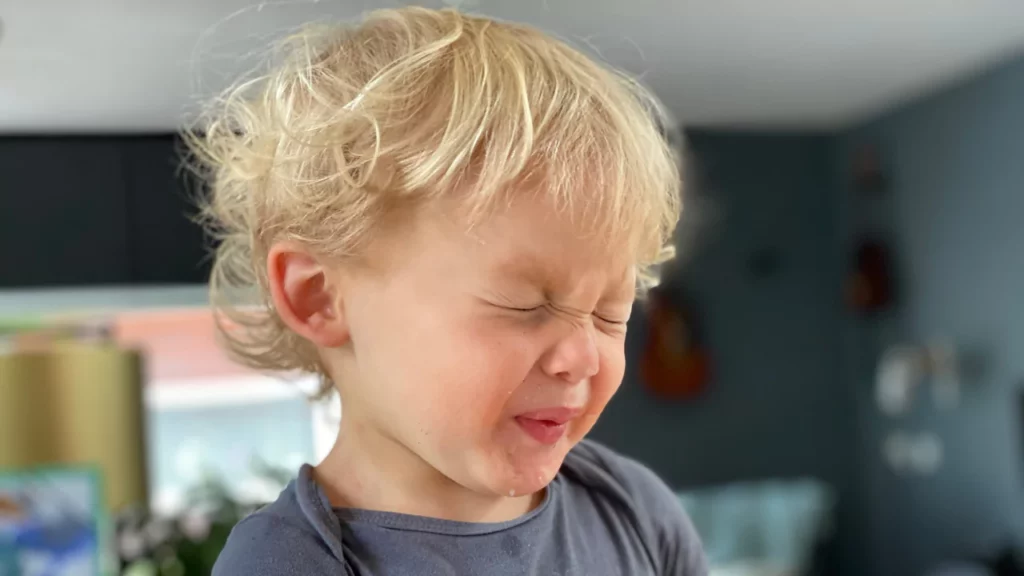Have you ever thought about why some people have black hair and others have blond, brown, or red hair? Or why your child’s hair color is different from yours?
The answer is in the genetics of hair color, which helps explain how different colors of hair and types of hair colors are passed down from parents to children.
Whether you have blonde, brown, red, or black hair, the genetics hair color chart contains all the answers.
In this article, we’ll explore the genetics of hair color, the types of hair colours, the color of hair that is natural to you, and the fascinating world of hair color genetics.
Quick Note:
want a quick overview about different hair colors: It’s all about genetics and melanin, the pigment in our hair.
Genes determine how much and what type of melanin we have, leading to various hair colors.
While black hair is the most common and dominant due to high eumelanin (dark pigment), blonde hair is rare, with low eumelanin. Red hair, even rarer, results from high pheomelanin (light pigment).
Our hair color can change over time due to age, hormones, and environment. Want to understand in detail about fascinating biology behind hair color, keep on reading this article.
If you want to predict hair color of your child, here is a simplified hair color calculator based on genetic predictions.
Child Hair Color Predictor
Select Hair Color of Mother, Father & Grandparents (if known)
Understanding Genetics of Hair Color
What determines the color of natural hair? It’s a fascinating subject that goes beyond the mere appearance of hair and reflects our unique genetic makeup, our ancestry, and the beauty of human variety.
Understanding this complex subject provides an appreciation for the individuality and uniqueness that our hair color genetics brings to life.
Genetics: A Recipe Book for the Body
Genetics is the science that explains how living beings inherit features like eye color, height, and hair natural colour from their parents.
These characteristics, or traits, are decided by genes, part of the DNA, acting like a recipe book for the body. Inside every cell, there are chromosomes carrying these genes, working together to control our appearance and function.
Melanin: The Hair Pigment Behind Hair Color Genetics
The colour of hair is determined by a color pigment called melanin, the hair pigment responsible for the types of hair colours in people.
Melanin has two primary forms: eumelanin, providing a dark color (black or brown), and pheomelanin, giving a lighter color (red or yellow).
The interplay of genetics hair color and biochemistry revolves around the production of melanin, a significant factor in determining the natural hair pigment.
MC1R Gene and Others: How Genes Decide Hair Natural Colour
The genetics hair color chart reveals that color in natural hair is determined by genes, such as the MC1R gene, inherited from parents.
Some genes lead to a dominant hair color, while others are recessive or co-dominant. Various alleles of the MC1R gene influence the dark or light shades of hair, with dominant alleles activating MC1R for dark hair and recessive ones deactivating it for light hair.
Protein melanocortin 1 receptor (MC1R) encoded by MC1R controls eumelanin and pheomelanin. When MC1R is activated, it triggers eumelanin production, resulting in dark hair.
When it’s deactivated, it stimulates pheomelanin, leading to light hair. This system explains the difference in hair pigment and how we observe different colors of hair in individuals.
But MC1R is not the sole determinant in hair color genetics.
Other genes, like ASIP, DTNBP1, GPR143, and more, can modify MC1R’s effect or influence the melanin production in hair.
Hair color is not determined by several that interact with each other and the environment. This interaction can create different types of color hair, ranging from black to blonde and from brown to red.
Some people may wonder, “What hair color is dominant?” or “How is hair color determined?” These questions point to different types of inheritance patterns that deviate from simple ratios.
For example, in the genetics of hair color chart, some genes might show incomplete dominance, where a mix of two colors appears.
Others may demonstrate codominance, where both colors show equally.
Further, some genes might influence others, resulting in polygenic inheritance, where several genes contribute to the continuous variation of a color.
Different combinations and expressions of hair color genes can produce various shades and tones. For example, one gene might control the amount of eumelanin, while another might affect pheomelanin.
Other genes may manage the distribution, density, shape, size, stability, and degradation of melanin, leading to a wide array of hair colors.
Some people’s genetics even allow for natural highlights or streaks in their hair, a result of variations in the amount or types of melanin in different hair follicles.
This aspect of hair color genetics can also explain why some individuals have different hair colors on various parts of their bodies, like head, eyebrows, eyelashes, beard, chest, arms, legs, and pubic area.
Different hormones or enzymes in these regions can influence the genes that control melanin production, creating these variations in hair color.
In conclusion, the genetics hair color chart represents the interaction of genes, environmental factors, and hormones that together create the different colors of hair we see.
From dominant hair color to types of hair colors and the natural colours of hair, the field of hair color genetics offers endless intrigue and complexity.
A Beautiful Diversity in Hair Natural Colour
The intricate system of hair color genetics, including the various genes for hair color and the role of melanin, enriches our understanding of human diversity in hair natural colour.
Here’s how the genetics hair color chart breaks down:
- Black hair: This is caused by a large amount of eumelanin, a dark pigment. Black hair means MC1R is activated, creating high levels of eumelanin. Black hair is a dominant hair color, common in Asia and Africa. It shows the genes for hair color are working to produce a lot of eumelanin.
- Brown hair: Brown hair has a moderate amount of eumelanin, creating various shades of brown. It happens when MC1R is partly active, leading to moderate eumelanin production. This natural hair colour is also dominant, especially in Europe.
- Blond hair: Blond hair has very little eumelanin and no other pigments. It’s created when MC1R is turned off or blocked, resulting in low eumelanin. Blond hair is recessive and rare except among Northern Europeans. The genetics of this hair color is also affected by other genes like KITLG, further reducing eumelanin.
- Red hair: Red hair has mostly pheomelanin, a reddish-yellow pigment, with a small amount of eumelanin. When MC1R is deactivated or blocked, it leads to high pheomelanin. Red hair, one of the types of hair colours, is recessive and rare, mostly among Celtic and Scandinavian people. The genetics hair color chart shows that genes like ASIP can also influence red hair.
- Brunette hair: This term refers to brown or black hair and results from various combinations of eumelanin and pheomelanin. The activity of MC1R and other genes that affect melanin makes brunette hair range from dark to light brown.
The natural colour of hair varies among different individuals based on how the genes for hair color are expressed. From black to blond and red, these different shades make up the broad spectrum of types of color hair we see in people around the world.
Understanding how hair color is determined, and the dominant hair color in different regions, helps us appreciate the beautiful variety in natural hair colours.
Other Factors That Affect Hair Color
The genetics of hair color involves a fascinating interplay of genes and environmental factors. Though genetics plays a major role in determining the color of our hair but there are other factors that can have a say. Such as:
Age
As we grow older, the cells that produce melanin, called melanocytes, become less active or die off.
This decrease in melanin leads to a reduction in natural hair colors, resulting in grey or white hair. Such age-related changes in hair color genetics are normal and are most common in people entering their late 30s and beyond.
Though this greying process is often unavoidable, maintaining a healthy lifestyle and proper nutrition can keep the hair’s natural color vibrant for longer.
Some people choose to color their hair to cover grey strands, but it’s essential to understand that this is a cosmetic change, not a reversal of the dominant hair color.
Harmones
Hormones can also influence hair color genetics, affecting the texture and shade of hair. Thyroid hormones, for example, directly affect melanocytes’ activity, potentially causing hair to darken or lighten.
Changes in hair color due to hormonal fluctuations during life events like pregnancy or menopause are typically temporary.
Treating hormonal imbalances can help restore the original hair color, but consulting a healthcare provider is crucial for the right course of action.
Thyroid
The thyroid gland, responsible for regulating many bodily functions, including hair growth, can also cause changes in hair color.
Both overactive and underactive thyroid can affect the color in natural hair, making it dry and dull.
Proper medical diagnosis and treatment for thyroid issues can reverse these effects on hair color genetics, maintaining the different colors of hair.
Nutrition
A balanced diet is essential for healthy hair pigment. Lack of nutrients like vitamin B12, iron, and copper can lead to dull and lifeless hair.
By nourishing the melanocytes, proper nutrition helps in maintaining vibrant natural hair colours. Professional dietary advice can guide you in restoring natural hair colours if they have changed.
Stress
Chronic stress has also been linked to premature greying of hair. Stress can trigger the release of cortisol, a hormone that can suppress the activity of melanocytes and reduce melanin production.
Stress can also cause inflammation and oxidative stress, which can damage the DNA and proteins involved in melanin synthesis.
Managing stress can prevent or even reverse premature greying, helping preserve the color in natural hair.
Environmental Factors
Environmental factors like sun, pollution, and chemicals can cause hair color to change, affecting different colors of hair. For example, Sun exposure can alter your hair color by changing the structure and stability of melanin, the hair pigment responsible for color.
Sunlight’s ultraviolet (UV) rays can penetrate the hair shaft, breaking down the melanin’s bonds and causing it to fade or change. This may result in lighter or redder hair.
In addition to altering color in natural hair, sun exposure can damage the DNA and proteins that create melanin, leading to abnormal pigment formation or reduced production.
Protecting hair from these influences can prevent unwanted changes in color. Regular hair care and using products with UV protection are ways to preserve the different colors of hair and even reverse some environmental damage.
Proper care, medical guidance, and healthy lifestyle choices can help in preserving or even reversing some changes, showcasing the intersection of genetics and other influences in the beautiful world of hair color genetics.
Illness and Hair Color
Certain diseases or conditions like phenylketonuria (PKU) can interfere with melanin production, leading to changes in hair color. This connection between genetics and health showcases how hair color is determined not only by genetics but also by overall wellness.
The genetics of hair color is a complex and fascinating subject. It includes the interaction of multiple genes for hair color, as well as environmental factors that can impact the color of natural hair.
Affects of Ethnicity and Ancestry on Hair Color
Genetics hair color chart variations often align with different ethnic groups or geographic regions. Different populations have unique genes that determine the types of hair colours.
Different ethnic groups or geographic regions may have different frequencies or distributions of certain alleles or variants due to genetic drift, natural selection, gene flow, mutation, etc.
For example, specific variations resulting in red or blond hair are common in people of European descent. These alleles or variants may have been selected for over time due to their beneficial effect on vitamin D synthesis in low-sunlight regions.
On the other hand, people of African descent tend to have darker skin and hair due to higher levels of eumelanin production. These alleles or variants may have been selected for over time due to their protective effect against UV radiation and skin cancer in tropical regions.
Which Parent Determines Your Baby’s Hair Color?
Are you curious about how your baby’s hair color is determined? You might wonder about the genetics of hair color and if the mother or father has more influence. Or is it a mix of both?
Both parents influence a baby’s hair color through a blend of dominant and recessive genes for hair color. Dominant genes, like those for brown hair, usually overpower recessive ones, such as those for blonde hair.
However, a child might inherit two recessive genes, like blonde, leading to blonde hair instead. The final hair color, encompassing different colors of hair, depends on the unique genetic combination from both parents.
It might not always match either parent’s color and can change over time, particularly in childhood when melanin production might vary. Thus, predicting a child’s exact hair color can be complex.
Here’s a table that reflects this more complex interplay. It is a simplified representation and does not fully encapsulate the genetic factors that determine hair color, but it serves as a general guide:
| Parent 1 | Parent 2 | Most Likely Child’s Hair Color | Other Possible Colors |
|---|---|---|---|
| Black/Brown | Black/Brown | Black/Brown | Rare chance of other colors |
| Black/Brown | Blond | Black/Brown | Blond, small chance of Red |
| Black/Brown | Red | Black/Brown | Red, chance of other combinations |
| Blond | Black/Brown | Black/Brown | Blond, small chance of Red |
| Blond | Blond | Blond | Chance of other colors |
| Blond | Red | Strawberry Blond | Very small chance of other combinations |
| Red | Black/Brown | Black/Brown | Black/Brown, small chance of other combinations |
| Red | Blond | Strawberry Blonde | Very small chance of other combinations |
| Red | Red | Red | Rare chance of other colors |
Two Blonde Parents Make a Blonde Baby
If you’ve ever wondered whether two blonde parents can have a black, brunette or redhead child, the typical answer is no. However, this isn’t absolute; rare cases may result in blonde parents having a child with brown or red hair.
Blonde hair typically occurs due to recessive alleles, lacking the dark pigment eumelanin. But it’s important to recognize that hair color isn’t determined solely by a single gene.
There’s a complex interplay between various genes, and several of them can influence the final color. In simple terms, if both parents only carry the gene for blonde hair, their children will most likely inherit blonde hair too.
But if that’s not the case, don’t jump to conclusions about parentage (though if you have a doubt only DNA testing can provide a definitive answer, not the hair color.)
In rare cases, denovo (new) mutations can arise and give different color than expected.
It is also common than you might imagine to have a kid with brown or black hair color to both blonde parents and in most such cases child loose black hair by 6th month and have lifelong blonde hair, so don’t worry if you are in this situation and friends around you are poking about it.
Brunettes Can Give Birth To Blondes
What about brown-haired parents? They can have a blonde baby, depending on their hair color genetics and the types of color hair genes they carry.
If both carry a gene that allows blonde hair, the child might be blonde (25% probability). The genetics hair color chart can explain these combinations.
Genes for Red Hair
Red hair color genetics is unique. Variations in the MC1R gene cause red or yellow hair pigment pheomelanin, another aspect of hair color genetics.
If both parents carry this gene, their child might have red hair. How common this is depends on factors like where they live. In Europe, for example, red hair is more prevalent.
Black Hair
Black is the most common and dominant hair color, resulting from more eumelanin. Many genes control black hair, and it usually dominates other natural hair colors.
The different colors of hair genes that parents carry may influence the color in natural hair for their children.
Genetic variations or mutations in genes that control melanin production can introduce new types and shades. Other than being inherited, These changes might occur randomly or due to factors like radiation or chemicals.
For instance, someone may develop unique hair colors or patterns due to a genetic condition called vitiligo, which leads to loss of pigment in patches of skin and hair.
Final Words on Genetics of Hair Color
Hair color genetics is a rich subject, offering insights into the types of hair colors, dominant hair color genes, how is hair color determined, what hair color is dominant, and various different colors of hair.
Understanding the genetics of hair color helps us appreciate the natural hair colors diversity and beauty, from what hair color is dominant to color in natural hair and more.
Whether you’re exploring hair color genetics chart or different colors of hair, the science behind the color of hair is both fascinating and intricate.
FAQs on Hair Color Genetics
Is blonde hair recessive or dominant?
Blonde hair is generally considered a recessive trait. This means that a person needs to inherit the blonde hair gene from both parents to have blonde hair.
If they inherit only one blonde hair gene, they are unlikely to have blonde hair.
Is black hair dominant or recessive?
Black hair is dominant. This means that if a person inherits the gene for black hair from one parent, they are likely to have black hair, even if the other parent has a different hair color.
Is brown hair dominant or recessive?
Similar to black hair, brown hair is also a dominant trait. If one parent passes on the gene for brown hair, the child is likely to have brown hair, regardless of the other parent’s hair color (other than black).
Where do you get your hair genetics from?
Hair genetics are part of your DNA, which you inherit from your parents. These genes have been passed down through generations in your family. Your hair genetics come from both of your parents. You inherit half of your genetic makeup from each parent, which includes the genes responsible for your hair color. The combination of these genes determines your hair color.
When does a baby’s hair color change?
A baby’s hair color can change as they grow older, typically in the first few years of life. This change happens as the natural pigments in their hair, known as melanin, develop and become more pronounced. It’s common for babies born with light hair to have darker hair as they age.
What color hair is dominant?
In general, darker hair colors, such as black and brown, are dominant. This means that these hair colors are more likely to appear in individuals if one of the parents has dark hair. However, the inheritance of hair color can be quite complex due to the involvement of multiple genes.
References:
- Is hair color determined by genetics? – MedlinePlus
- Human hair color – Wikipedia
- Genetics of Hair Color – News-Medical.net
- Melanin in Hair: Its Role and How to Increase Production – Healthline
- Colour Theory for Hairdressing – Hair & Makeup Artist Handbook
- Why Does Hair Color Change With Age – Your Hair Trends
- The History of Hair Color | How Hair Color Has Changed Over Time
- How Does Hair Color Change Over Time? – Toproductoo
- Relation Between Ethnicity and Hair Types | HealthGuidance.org

Dr. Sumeet is a seasoned geneticist turned wellness educator and successful financial blogger. GenesWellness.com, leverages his rich academic background and passion for sharing knowledge online to demystify the role of genetics in wellness. His work is globally published and he is quoted on top health platforms like Medical News Today, Healthline, MDLinx, Verywell Mind, NCOA, and more. Using his unique mix of genetics expertise and digital fluency, Dr. Sumeet inspires readers toward healthier, more informed lifestyles.





